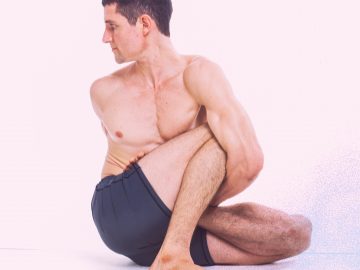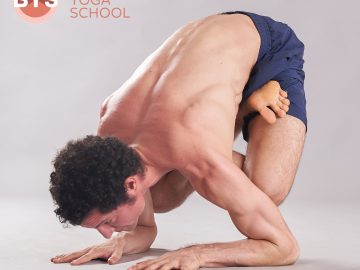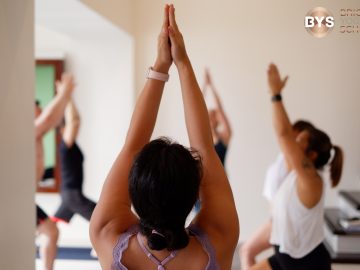Backbends are very complex postures that require deeply getting into an extended spine. Ideally, when doing backbends, one should feel a deep stretch in the front part of the body without feeling compression around the lower back. A number of practitioners often report a lot of pain in the lower back and glutes after practicing backbends – if this kind of pain only shows up during the practice, there is something that the practitioner has to be aware about, and he/she must pay more attention to his/her foundation when moving into backbends. However, if the pain is reflected thoughout the day, it is a clear sign from the body that there is something that must change in the way the backbends are practiced.
In order to understand how to work into a backbend safely, it is important to have a look into the anatomy of the spine, and to find out how much flexibility and strength you need to have in different areas of your body to get into deep backbends.
Our spine is made up of many small bones called vertebrae, and in order to get into a backbend in a safe way, it is vital that we integrate all these vertebrae into the movement – this is how we can create space in our back before bending it into a deep extended position. A single vertebrae cannot move that much on its own; however, when we integrate the small movements of all 26 bones (including the coccyx/tailbone), we can create a big range of movement in our spinal column.
The human spine is in between two major joints – the shoulder joints and hip joints. If any of the muscles around these joints are stiff, backbends will be more challenging to achieve without feeling pain or discomfort. That is why it is a good idea to first practice asanas that can open up the hips and shoulders before getting into backbends.
Here are a few causes of lower back pain when practicing backbends:
1. Lack of mobility in the Thoracic Spine due to a lack of shoulder flexibility.
2. Tension on the hips, especially on the hip extensors (glutes). When the glutes are tense, these muscles will compress the lower back, creating tension around this area.
3. Tension in the hip flexors. This is the group of muscles that allow the leg to flex. If these areas are tense, it will restrain movement around sacrum and lumbar spine. This will create lot of compression around the lower back and a rounded spine position (kyphosis). In a long term this can produce shoulder and neck pain also.
One of the easiest ways to open the shoulders and hip extensors in to sit on something elevated (high enough that your feet do not touch the ground as you sit on it) – such as a sturdy and stable table that can carry your body weight. Sit on the edge of the surface, then lie down, allowing your legs to hang down. Relax, and stay here for 3 minutes.
To open the shoulders, one good technique is to lie down on the bed with your shoulders just at the edge of the mattress. Allow your head to hang down freely, and release your arms backwards. Stay here for 2 minutes or as long as you feel comfortable.
In order to improve flexibility in the hip extensors, postures such as Eka Pada Rajakapotasana (Pigeon Pose), Dwi Pada Rajakapotasana (Double Pigeon Pose), and Gomukhasana (Cow Face Pose) are excellent asanas to stretch out these muscles.
It is important to remember that it is just as important to build strength just as much as flexibility. Certain areas of your body must be strong enough to support you in your backbends. These areas are: quadriceps, inner thighs, abdomen, and pelvic floor.
Strength can built up through consistent practice. Even as you start your practice by moving through Sun Salutations, already bring your awareness to subtle activations in certain areas of your body – press the toes down firmly, pull the quadriceps up, squeeze the inner thighs inward – all of which will activate the pelvic floor.
Keep all these techniques in mind as you go through your practice, and observe how you will gradually build enough flexibility and strength to support your backbends. Give it a try, and let us know how you feel!



